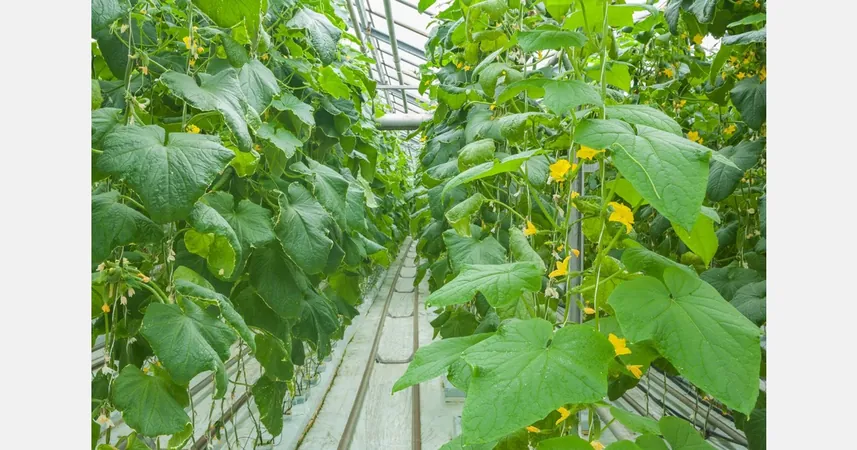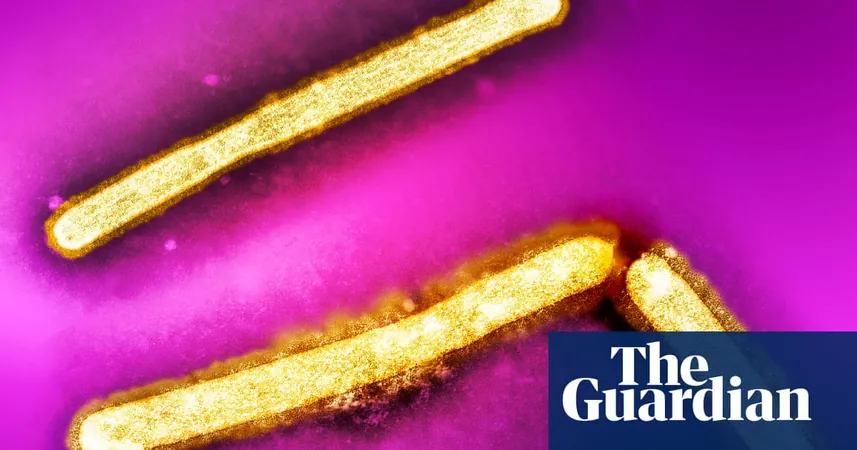
Shocking Research Reveals Dangers of Polystyrene Nanoplastics in Leafy Vegetables!
2024-11-12
Author: Liam
Introduction
Recent studies indicate that airborne micro-nanoplastics (MNPs), particularly those made from polystyrene, are becoming a rising environmental threat that could undermine agricultural systems worldwide. Yet, a crucial gap exists in our understanding of how these minute particles affect leafy vegetables, which are vital to human diets.
Groundbreaking Experiment
To shed light on this issue, researchers conducted a groundbreaking experiment with polystyrene nanoplastics (PS-NPs) on four commonly consumed leafy vegetable species: Brassica rapa var. chinensis, B. rapa var. parachinensis, Amaranthus viridis, and Allium tuberosum. What they discovered is alarming!
Findings
The study showed that PS-NPs often accumulate in the epidermal layers and the protective cuticles of leafy greens, concentrating particularly around the stomatal openings. Notably, the research revealed a higher concentration of PS-NPs on the upper (adaxial) and lower (abaxial) surfaces of the leaves rather than in cross-sections, suggesting these particles are drawn to leaf surfaces due to their unique structures. Interestingly, leaves with tiny hair-like structures known as trichomes were found to trap even more PS-NPs.
Implications
The implications of this accumulation are dire. Researchers found a significant decline in chlorophyll content and photosynthetic rates, leading to adverse effects on the growth and nutritional quality of the vegetables. This raises the alarm regarding the overall health of our foods as PS-NPs can infiltrate edible plant tissues. Given the essential role leafy greens play in our diets, these findings are a wake-up call for a deeper investigation into food security and potential risks to human health.
Call to Action
With pollution from plastics reaching epidemic levels, the results of this study serve as an urgent reminder of the need for cleaner agricultural practices. Are we unknowingly poisoning ourselves with the very vegetables we consider nutritious? Continued research will be necessary to fully grasp the long-term consequences of PS-NPs on our food supply and health. This is a critical moment for policymakers and consumers alike to consider the long-term health of our ecosystem and food sources.
Conclusion
Stay informed and safeguard your health – the future of our food might depend on it!









 Brasil (PT)
Brasil (PT)
 Canada (EN)
Canada (EN)
 Chile (ES)
Chile (ES)
 España (ES)
España (ES)
 France (FR)
France (FR)
 Hong Kong (EN)
Hong Kong (EN)
 Italia (IT)
Italia (IT)
 日本 (JA)
日本 (JA)
 Magyarország (HU)
Magyarország (HU)
 Norge (NO)
Norge (NO)
 Polska (PL)
Polska (PL)
 Schweiz (DE)
Schweiz (DE)
 Singapore (EN)
Singapore (EN)
 Sverige (SV)
Sverige (SV)
 Suomi (FI)
Suomi (FI)
 Türkiye (TR)
Türkiye (TR)